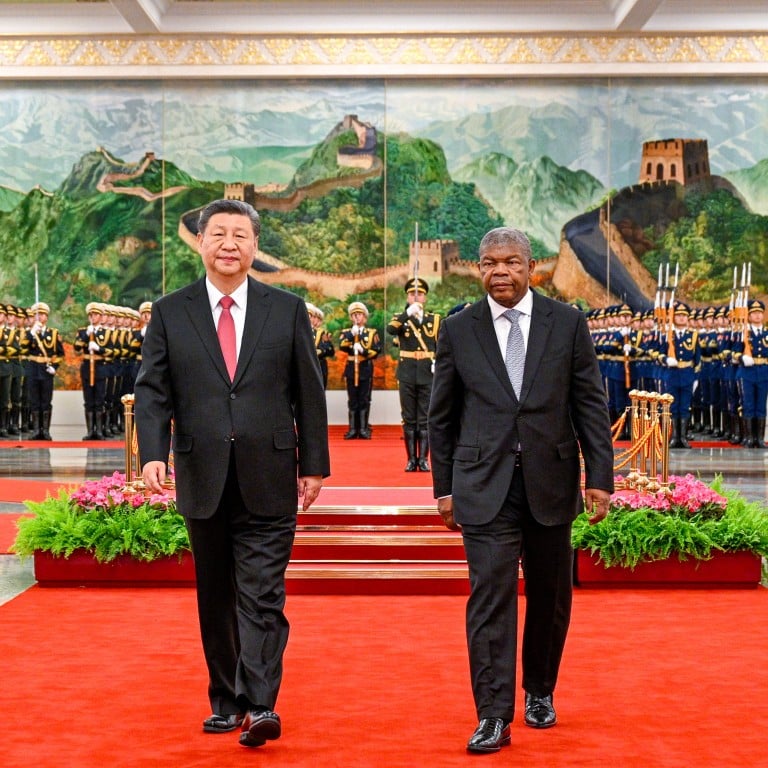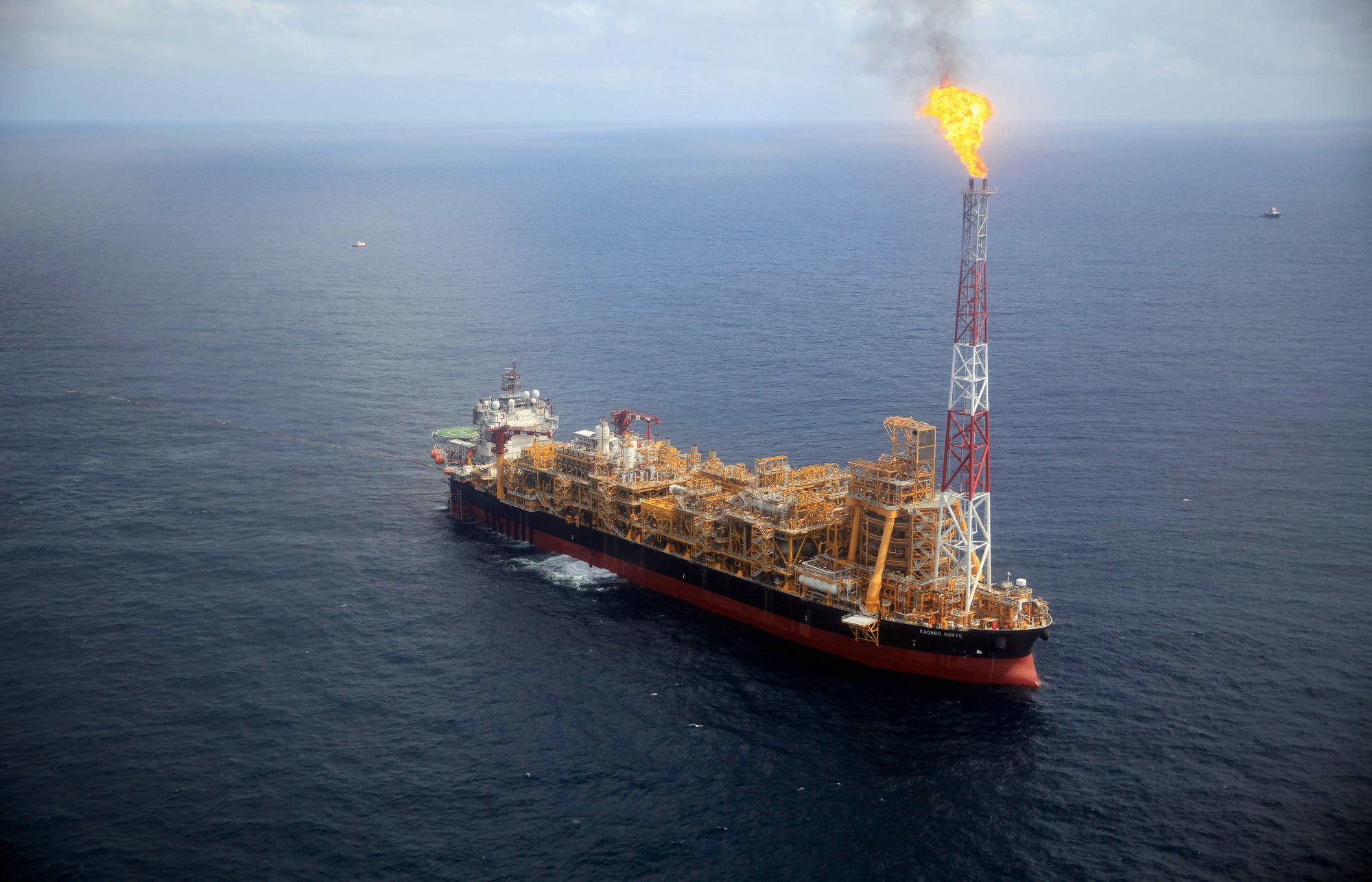
How China and Angola are redefining economic ties for a post-oil, post-loans era
- Following decades of the ‘Angola model’ – oil-backed loans to access Chinese funding for infrastructure – Beijing vows to help modernise Angola
- ‘We addressed the problem of Angola’s debt to China … but also the need for the creditor to help us get out of the suffocating situation’: President Lourenco
For two decades, oil has been the crux of Sino-Angolan relations, but now, in a post-oil and post-loans era, Angola is banking on mining, agriculture and manufacturing to redefine its economic ties with China.
China will help Angola strengthen cooperation in mining and agricultural development and add further value in those sectors. According to a joint statement released after the meeting, Beijing will encourage Chinese enterprises to take part in “investment projects that support the upgrading of Angola’s industrial chain”.
Attracting Chinese private investment is part of Angola’s plan to cut its excessive reliance on oil, most of it exported to China to repay loans advanced as the country rebuilt after a 27-year civil war.
That war ended in 2002, opening the way for Chinese investment in the country. Former president Jose Eduardo dos Santos invited Beijing to invest in Angola after Western governments declined to help with reconstruction.

According to Boston University, between 2000 and 2022 Angola borrowed US$45 billion – about a quarter of China’s total lending to African countries. Angola owes Chinese creditors about US$17 billion, most of it to China Development Bank and Export-Import Bank of China.
Dominik Kopinski, an associate professor in the Institute of Economics at the University of Wroclaw and senior adviser at the Polish Economic Institute, said Lourenco’s visit to China was part of Angola’s efforts to diversify and cultivate links with a wide range of partners.
“Those who thought the recent recalibration of Angola’s foreign policy meant ditching China and embracing the West will feel disappointed,” Kopinski said.
Kopinski said that with little chance for new loans like those seen under dos Santos, and a continued infrastructure frenzy, Lourenco had been trying to shift gears to attract private investment.
This was reflected in his China trip schedule.
Lourenco’s four-day state visit included talks with executives of major Chinese companies, including China Gezhouba Group Corporation which is building the Caculo Cabaca hydroelectric plant in Angola’s Cuanza Norte province, and Hebei Huatong Cable Group, which is building an aluminium production factory in Angola.
Tim Zajontz, a research fellow in the Centre for International and Comparative Politics at Stellenbosch University, said Angola and China were still redefining their economic relationship in a post-oil and post-loans era.
Zajontz said Lourenco promoted Angola as a destination for Chinese investment in the hope it could boost the country’s troubled economy.
“It is also likely that Angola’s debt will be discussed behind closed doors,” Zajontz said.
Focused on Global South, China upgrades ties with Angola
In a speech during talks with Xi, Lourenco appealed to China to help it ease its debt troubles.
“We addressed the problem of Angola’s debt to China, our desire to continue honouring our commitments and obligations as a debtor, but also the need for the creditor to help us get out of the suffocating situation,” Lourenco said in a speech published in the Luanda-based Jornal de Angola.
In a meeting with Chinese Premier Li Qiang, Lourenco sought financing for a refinery in the port city of Lobito, a petrochemical plant and a military air force base.
Kopinski said that with little chance for new loans like those seen under dos Santos, and a continued infrastructure frenzy, Lourenco had been trying to shift gears to attract private investment.
Lourenco thanked China for its help during Angola’s reconstruction.
“When we were in urgent need of large financial resources for national reconstruction, China was the only country in the world that truly came to our aid to rebuild the main infrastructure and build new [projects] that were equally important for the economic and social development of Angola,” he said.
In the meantime, the United States has tried to push back on China’s influence in Angola. The US pledged US$1 billion to refurbish the Lobito Atlantic Railway, its first major project in Africa in decades, which will stretch 1,300km (807 miles) through mineral-rich Zambia and the Democratic Republic of Congo (DRC) to create a logistics corridor to the port of Lobito.
But China’s economic influence in Angola runs deep and Angola still needs China to fund the construction of the major infrastructure projects such as the 2,172 megawatt Caculo Cabaca hydropower station and the Lobito oil refinery.
He said that despite the recent decline in Chinese investment and loans in Africa, “this doesn’t indicate China’s retreat from the continent” but it instead reflected pragmatic experimentation – evaluating what worked and what did not, and then adapting accordingly.
Kopinski said the Lobito Corridor revamp was not a “China-free” project, with China Communications Construction Company (CCCC) having a 32.4 per cent stake in Mota-Engil, one of two big members of the consortium.
Zajontz said there could be no doubt that Beijing was closely watching Western investment plans along the Lobito Corridor.
He said the US government identified Angola as the preferred gateway to critical minerals in the DRC and Zambia but the Chinese government had no interest in leaving the field to Western firms.
Mark Bohlund, a senior credit research analyst at REDD Intelligence, said Lourenco’s meeting in Beijing was arguably more important for Angola because of the high level of payments to Chinese creditors that weighed on the balance of payments and government finances.
He said Lourenco was probably seeking some way to reduce these, most likely by lengthening the term of the loans.
Africa is key in China’s bid to de-risk its iron ore supply
Bohlund said the most important factor for Beijing was likely to be keeping Angola on board in servicing Chinese debt without more aggressively seeking better terms, which could have knock-on effects in other African debtor countries.
He said the race for access to copper and other rare earth minerals in the DRC and Zambia had accelerated with the Lobito Corridor project.
Chinese officials would want to ensure their support for “upgrading the rail route from Zambia through Tanzania to the Indian Ocean does not disrupt their relations with Angola”, he said.



